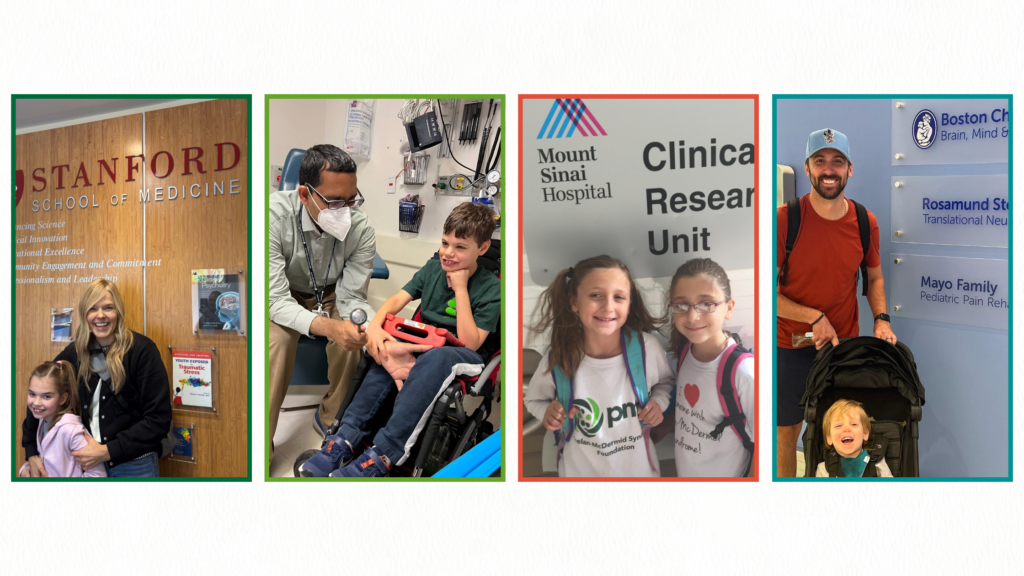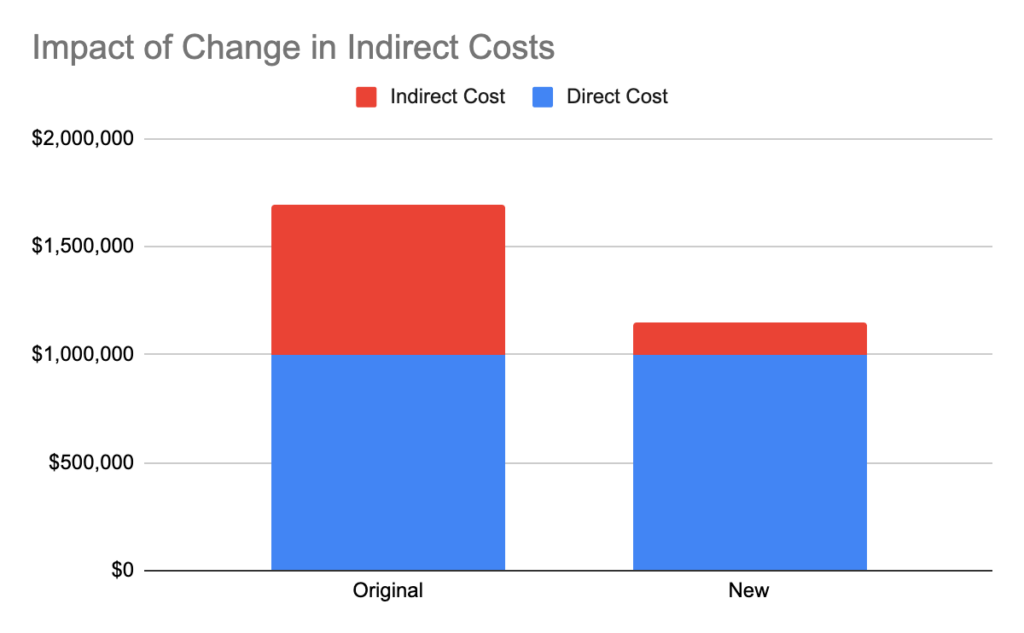
With a past annual budget of nearly $50 billion (yes, that’s with a B!), the National Institute of Health (NIH) is the largest source of public funding for biomedical research in the United States. The NIH funds over 300,000 researchers at more than 2,500 institutions. NIH funding has been responsible for some of the greatest biomedical breakthroughs in history, including the development of immunotherapy for certain cancers, medication to prevent HIV, newborn screening for treatable conditions, and gene therapy for spinal muscular atrophy (SMA). It has also supported gene therapy for other rare diseases similar to Phelan-McDermid syndrome, including Angelman syndrome and Rett syndrome.
Over the past 5 years, NIH has awarded over $50 million to studies focused on SHANK3 and Phelan-McDermid syndrome, funding nearly 50 different researchers. As of February 2025, there are over 20 actively funded studies.
But what does NIH funding actually cover?
As you may have heard in the news lately, NIH funding covers both “direct” and “indirect” costs.
- Direct Costs – costs directly related to the research project:
- Salary support for primary investigators and co-investigators
- Salary support for research assistants and other lab staff, including post-doctoral, graduate, and undergraduate students
- Equipment for lab experiments and procedures
- Chemical compounds or other materials to perform experiments
- Licenses for specific software to run experiments, conduct data analysis, etc.
- Compensation for human participants OR cost of animal specimens
- Conference travel to share research findings
- Publication costs for peer-reviewed journals (often $1,000-$3,000!)
- Indirect Costs (or “Facilities and Administrative” Costs) – costs supporting research across the institution:
- Institutional Review Board (research ethics committee) and grants management staff
- Animal care facilities and staff
- Additional support personnel, including IT, building maintenance, custodial, and security staff
- Rental and maintenance of office and lab spaces
- Larger shared lab equipment (e.g., magnetic resonance imaging machine)
- Scientific journal subscriptions
Every institution negotiates a rate of indirect costs with NIH that is a percentage of the requested direct funding amount. The average rate in 2024 was ~30%, however the majority of institutions doing research in Phelan-McDermid syndrome/SHANK3 were much higher.
- Icahn School of Medicine at Mt. Sinai – 69.5%
- Baylor College of Medicine – 60%
- Boston Children’s Hospital – 77%
- University of Utah – 53.5%
- Rush University – 58%
- Yale University – 67.5%
- Clemson University – 52%
- Rutgers Biomedical and Health Sciences – 57%
- University of Miami – 53.5%
- Indiana University School of Medicine – 58.5%
Effective as of February 10, 2025, the NIH implemented a new policy capping indirect cost rates for NIH grants at 15%, replacing previously negotiated rates.
Let’s make up an example. A $1,000,000 grant was awarded to Dr. Alex Kolevzon at Mt. Sinai, which originally had an indirect rate of 69.5%. With the new policy, this is reduced to 15%. Although, Dr. Kolevzon will still have the full amount of the grant to carry out the research project, the indirect cost cut to his grant and every other grant at Mt. Sinai will greatly reduce the ability of Mt. Sinai to maintain their facilities and resources needed to conduct research. As we are seeing at other major institutions, this means he may lose administrative and IT support staff, lose access to share research equipment, and even lose his own research staff that is only partially paid on this grant.

Which studies get funded?
At NIH, there is a two-stage process to determine which studies get funded and which studies do not get funded.
- Step 1: “Study Section” – This is a peer-review process where researchers with expertise in the field (but no conflicts of interest with the study team) score the grant independently and then meet as a group to discuss the strengths and weaknesses of the grant. Everybody then re-scores the grant to give it a final score.
- Step 2: “Council” – After all the grants are scored, NIH officials determine which grants qualify for funding based on their score.
Currently, many Study Sections and Councils have been delayed. Some of these Study Sections have already been rescheduled, others have not. For example, the Study Section for the renewal of the RDCRN study (or commonly referred to as the “Natural History Study”) did not meet as planned at the beginning of the year but has now been rescheduled for the end of April. We are very glad it has finally been rescheduled, but it is important to note that this does not guarantee continued funding (still has to score well!) and if we do score well, council will need to meet and make the final decision. The timeline from grant submission to study section to council to release of funds usually takes 9-12 months, but can be longer. With recent delays, we do not expect the Natural History Study to begin again until 2026, best case scenario. Over the past year, with the support from donations, the Phelan-McDermid Syndrome Foundation has helped cover gaps in funding and travel reimbursements for the Natural History Study and hope to continue to do so.
What is our research community saying?
Researchers in the Phelan-McDermid syndrome field (anonymous to protect their privacy) have shared with us that they have already had to let go of people on research staff (due to funding delays and indirect cost changes) and remain “extraordinarily concerned [due to] a lot of uncertainty”. Additionally, they shared their fears that these changes at NIH also would impact universities’ ability to fund trainees, thus losing the next generation of Phelan-McDermid syndrome researchers. There already have been reports that certain institutions closed graduate school admissions this year. One researcher shared their concerns that institutions and investigators will struggle to maintain “niche” research like Phelan-McDermid syndrome, with more funding and support for more mainstream research, like cancer or heart disease, meaning over time fewer and fewer grants in rare disease will receive funding.
What else is happening with federally-funded biomedical research?
We know with the Continuing Resolution (CR) passing both the House and Senate recently, that approximately 57% cut to the Department of Defense’s (DoD’s) Congressionally Directed Medical Research Programs (CDMRP). The bill cuts funding for CDMRP from $1.509 billion in FY2024 to $650 million in FY2025. CDMRP has a specific Autism Research Program, and has funded two SHANK-3 related grants since 2020. The previously released pre-announcement for the Autism Research Program in FY2025 has been removed from the CDMRP website; however, additional information is needed to confirm whether the Autism Research Program is definitely cut.
So what now?
Our commitment:
- Advocate for increased federal funding and elimination of new indirect costs rate
- For example, PMSF has joined several sign-on letters along with our advocacy partners and other patient advocacy organizations requesting an increase in biomedical research funding
- Work with other patient advocacy organizations to strengthen our voice
- Continue providing PMSF-funded research grants
- Keep our PMSF community informed
What can you do?
- Help us advocate for federal funding by calling your U.S. Representatives and Senators – stay tuned for an upcoming podcast episode on Advocacy with tips and tricks!
- Ensure PMSF can continue to fund research grants through donations
The Phelan-McDermid Syndrome Foundation continues to closely monitor the federal funding for biomedical research grants, and will be sure to share any Action Alerts with you.
We want to thank our advocacy partners who are keeping us updated and informed. Check out the organizations below and maybe even sign-up for their emails!
Another way to stay informed, is to follow the Phelan-McDermid Syndrome Advocacy Facebook page. Although this page tends to post Action Alerts and articles that could directly impact the Phelan-McDermid syndrome community, it is not affiliated with the Phelan-McDermid Syndrome Foundation.
